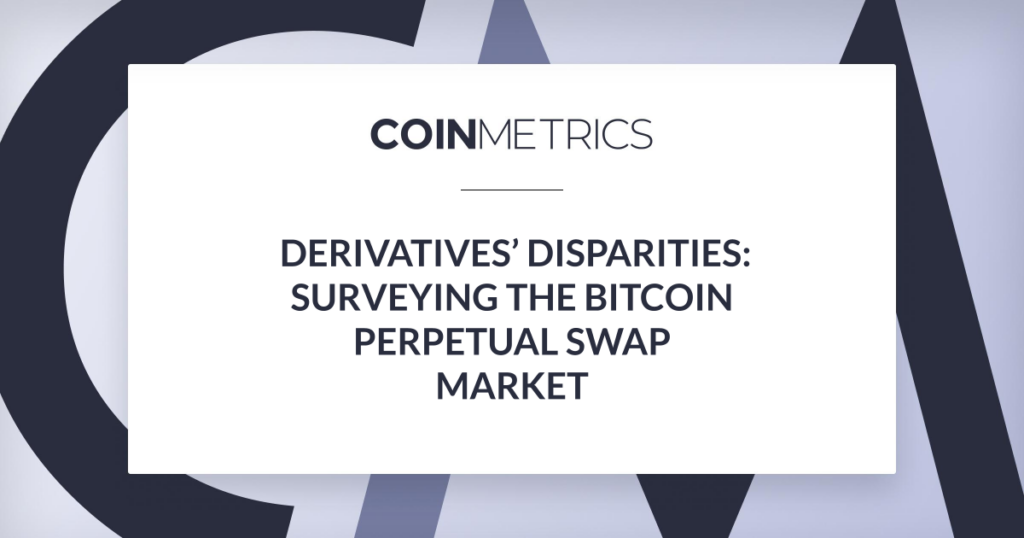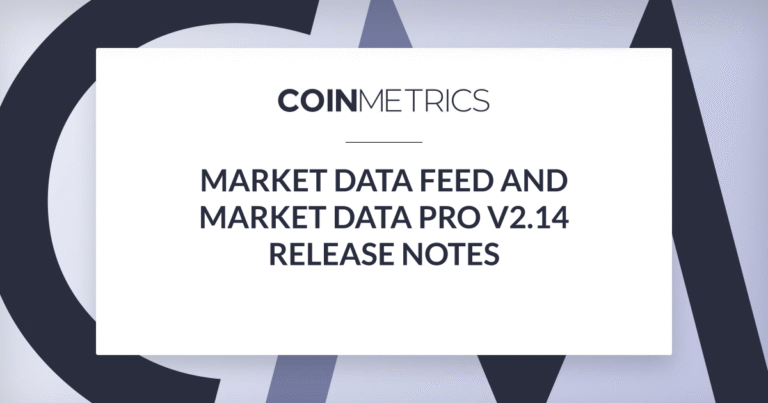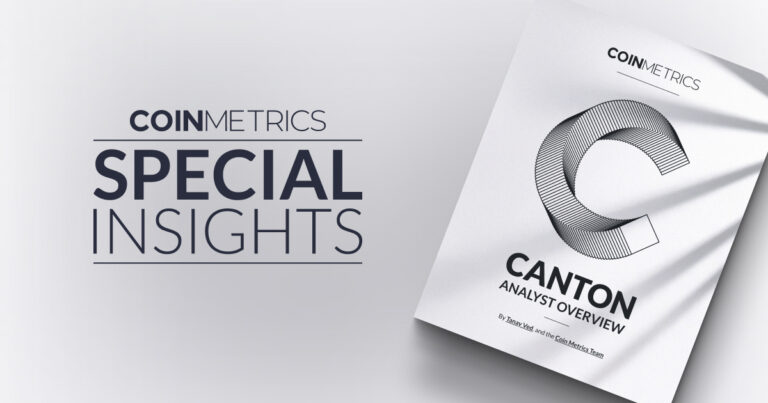Key Takeaways
- The derivatives market is fragmented and contract terms differ dramatically across exchanges. The quality of documentation in the space varies.
- We analyzed how each exchange structures their perpetual swaps, which are a type of derivative that approximates the price of its underlying asset in close to real time. Perpetual swaps are shifting away from bitcoin-margined inverse contracts, which have traditionally been dominant, and toward USDT-margined linear contracts. Exchanges also vary in how they calculate indexes and funding payments.
- Perpetual swap volumes have decreased since the start of the year, but have recently surged in line with bitcoin’s price activity.
- The lack of standardization in the derivatives market makes it difficult for traders to assess the degree of risk taken on indirectly via a position’s index. Poorly constructed indexes can negatively impact users, especially during market dislocations and periods of volatility.
Dissecting Derivatives
The crypto market is still young and the contract structure of derivatives varies across exchanges. Derivatives lack a standard methodology by which to calculate indexes and funding payments, and documentation in this space is generally difficult to follow. While these figures are important for traders to understand, especially during periods of market volatility, there’s a severe shortage of information on the topic.
Derivatives are incredibly influential on the broader market due to their association with levered trading, and bitcoin’s recent price appreciation has led to a surge in perpetual swap volumes. As is the norm in crypto, liquidity in this market is highly fragmented—in the case of derivatives, differing contract terms and API structures make it particularly difficult to harmonize data collected from different exchanges. These differences obscure the amount of risk taken on by users, especially through index composition and funding calculation.
To help us build out our upcoming derivatives data product which will complement our existing market data feed, the Coin Metrics team aggregated information from major derivatives markets on their contract structures. In this issue, we’ll take a close look at the state of the bitcoin perpetuals market and the discrepancies between perpetual swap contracts.
Volatile Volumes
A perpetual swap, also known as a perpetual, is a type of derivative that approximates the price of its underlying asset in close to real time. Perpetual swaps resemble fixed-maturity futures but don’t settle. Instead, these derivatives use a mechanism called funding to keep swap prices in line with those of the underlying asset.
Perpetuals were popularized in the crypto ecosystem by BitMEX, and are rare in traditional financial markets. Perpetual swaps account for a substantial portion of derivatives trading volume, dwarfing fixed-maturity futures volumes across the exchanges tracked by Coin Metrics.
Although perpetuals continue to drive the markets, year-to-date, monthly volumes across the exchanges where Coin Metrics currently has access to historical data have declined significantly. Binance, in particular, has gained a significant amount of market share this year.
A look at daily volumes reveals that trading volumes across exchanges tend to move in tandem with one another. It also shows a resurgence in activity in late July, corresponding to the recent appreciation in Bitcoin’s price. This view also traces the change in market dynamics to the March 12 crash; the role of derivatives exchanges in this crash was the subject of SOTN Issue 43.
Perpetuals are highly influential on crypto markets. Trading volume in the bitcoin perpetuals markets tracked by Coin Metrics is significantly higher than in all crypto spot markets passing Coin Metrics’ Trusted Volume Framework.
Proper Pricing
Due to market inefficiencies and fragmented liquidity, prices on cryptocurrency exchanges frequently diverge. This can lead to issues for derivatives exchanges, which require a cardinal index price for funding and settlement. What’s more, the leveraged products provided by derivatives exchanges create a large monetary incentive for malicious actors to tamper with their index prices by manipulating the underlying spot market. The indexes used by these exchanges must therefore continually be maintained in order to remain market relevant and functional in the presence of both incidental and intentional anomalies in their constituent markets.
State of the Network Issue 58 discussed market inefficiencies and dislocations, highlighting the need for robust cardinal pricing in the cryptocurrency space. Although index behavior can significantly affect traders in downside situations, there’s been little coverage of the topic. Documentation by exchanges on how they calculate their index prices varies in quality.
In order to effectively serve traders, index prices must be responsive, tracking the underlying market conditions with relatively low latency. This inevitably makes them somewhat volatile and reflective of temporary swings in the underlying markets. For pricing contracts and liquidating users, where this variance is undesirable, derivatives exchanges use mark prices, which trade off a reduction in responsiveness for a decrease in volatility.
Depending on the type of collateral used, perpetuals are classified as one of three types of contract: either an inverse contract collateralized in the underlying asset; a linear contract collateralized in the quote currency, typically USDT or USD; or a quanto contract collateralized in a third currency, generally bitcoin.
In markets with bitcoin as the base currency, inverse contracts are more common than linear ones, and quanto contracts are rare. As USDT supplants BTC as the ecosystem’s reserve currency, however, linear contracts are becoming more common. The beginnings of this trend are visible in the OKEx fixed-maturity futures market, where USDT-margined contracts recently passed BTC-margined contracts in open interest for the first time. While open interest for inverse perpetuals is still greater than for linear contracts on this exchange, the gap is closing. You can read more about the changing role of USDT in the crypto ecosystem at large in our report, The Rise of Stablecoins.
The index and mark price calculations used by the major derivatives exchanges for their bitcoin perpetual swap products are shown below, separated by contract type. Poloniex and Bitfinex have been excluded, the former due to the novelty of its markets and the latter due to lack of documentation. Two exchanges, OKEx and Bybit, support both types of contracts.
The majority of these indexes are composed by taking the simple or volume-weighted average of the price of the last executed trade from each constituent market, in the process discarding or bounding constituent prices that deviate by a certain amount from the median price. The constituent markets, frequency of weight adjustment, and bounds around the median vary by exchange, as do the criteria for excluding inactive exchanges. Two exchanges, Bybit and Kraken, have more elaborate index composition frameworks for their inverse perpetual products.
The most fundamental component of an index price calculation is its set of constituent spot markets. Derivatives exchange operators must trust the operators of their constituent exchanges not to tamper with the price of an asset by inaccurately reporting trades; if the index volume-weights its constituent components, the index operator must also trust its constituents to faithfully report volumes.
Determining which markets to trust is a nontrivial task discussed in depth in SOTN Issue 61. Inverse perpetuals’ indexes typically depend on BTC/USD markets, while linear contracts’ indexes tend to be based on BTC/USDT markets. The exception to this trend is FTX, whose linear contract is margined with a synthetic USD balance and whose index does not factor in any USDT-quoted markets.
Among the exchanges surveyed, constituent exchanges for inverse contracts are typically based in the United States, while Asian exchanges feature more prominently in linear perpetuals’ indexes.
Funding Fundamentals
In addition to discrepancies in index composition, derivatives exchanges differ in how they calculate funding.
Unlike fixed-maturity futures, perpetual swaps don’t settle. Instead, to maintain a peg to their underlying asset, they rely on a mechanism known as funding. In this construction, when a perpetual’s price exceeds that of the underlying, longs pay shorts, and when the perpetual’s price is lower than that of the underlying, shorts pay longs. These funding payments incentivize market participants to keep the price of the perpetual close to that of the underlying index.
The size of a funding payment is determined by the funding rate, which is typically fixed for the duration of the funding period and is a function of the difference between the perpetual and underlying prices in the previous period. In theory, the funding rate also depends on interest rates for the base and quote currencies, but in practice these values are fixed on all major derivatives markets. The methods used by the major derivatives exchanges to calculate funding for their bitcoin perpetuals are shown below, separated by contract type.
Exchanges differ substantially in how they calculate funding rates and payments. While most only require users to pay or receive funding payments if they hold a position at the end of a funding period, the length of which also depends on the exchange, some charge funding continuously.
Some exchanges also factor slippage into their funding rate calculations by using impact pricing, with the degree of slippage varying by marketplace. Most significantly, some exchanges place caps on the funding rate’s absolute or rate of change, likely to prevent the size or volatility of funding payments from making their products less usable and to avoid a liquidity crunch at the end of each funding period.
Levels and Levers
Finally, perpetuals contracts differ in the amount of leverage provided and the terms under which this leverage is offered. Exchanges tend to offer several degrees of leverage, typically expressed as a multiple of the initial margin posted.
Half of the major exchanges offer a maximum of 100x leverage. Two exchanges, Binance and Huobi, offer up to 125x leverage.
The amount of margin that users must maintain in order to avoid liquidation differs by exchange, but is usually equal to half the initial margin. Some exchanges also charge traders additional fees for the use of high-leverage products.
Conclusion
As perpetuals continue to drive the bitcoin market, understanding their mechanisms is critical. Perpetual swap volumes have soared with bitcoin’s recent price rally, and the perpetuals market continues to evolve. As the industry matures and adopts USDT as its common quote currency, we expect to see increased adoption of stablecoin-margined contracts.
As the market develops, we hope to see greater contract standardization. Currently, derivatives’ contract structures differ in ways that can tangibly impact traders, especially by introducing unforeseen risks through their index price compositions. By surveying the derivatives market, we hope to bring transparency to this opaque ecosystem, with the ultimate goal of providing a unified interface to derivatives market data.



